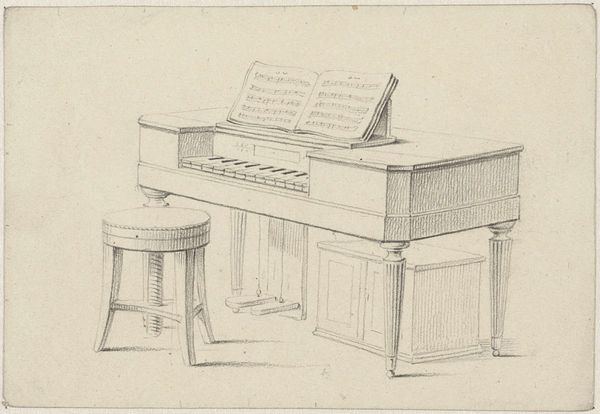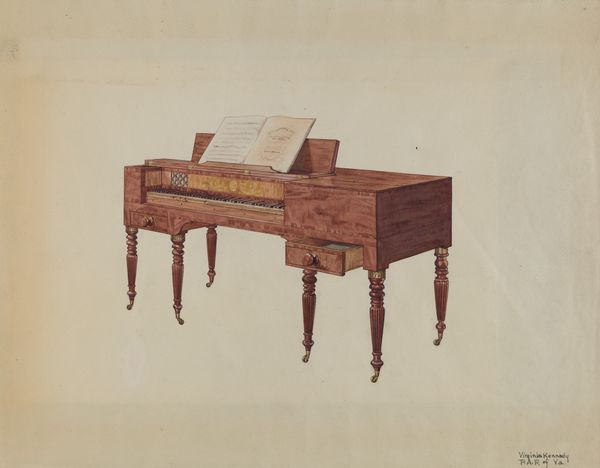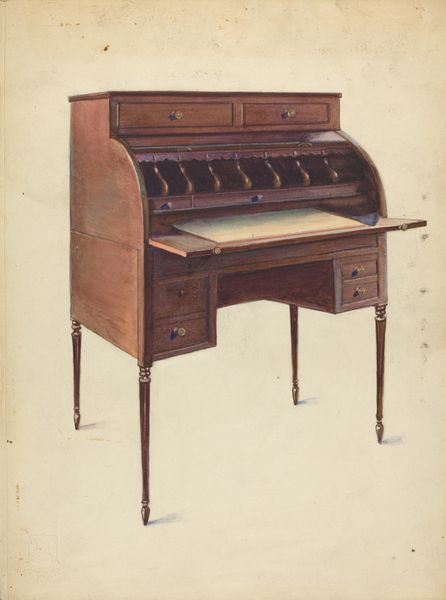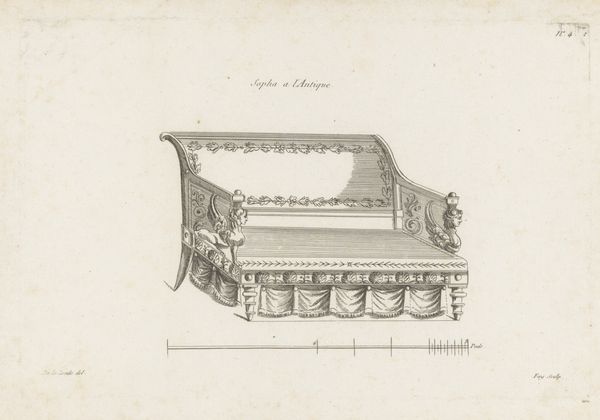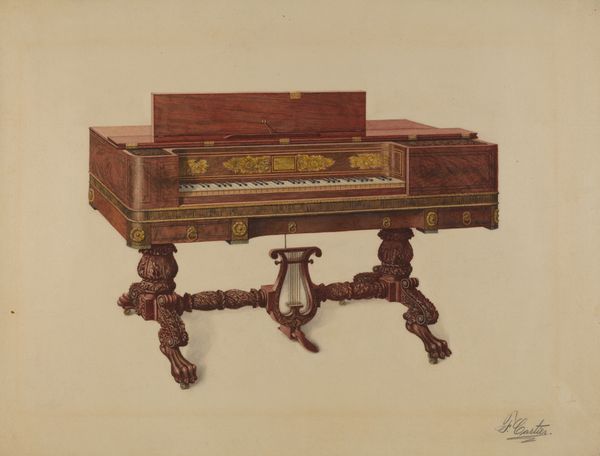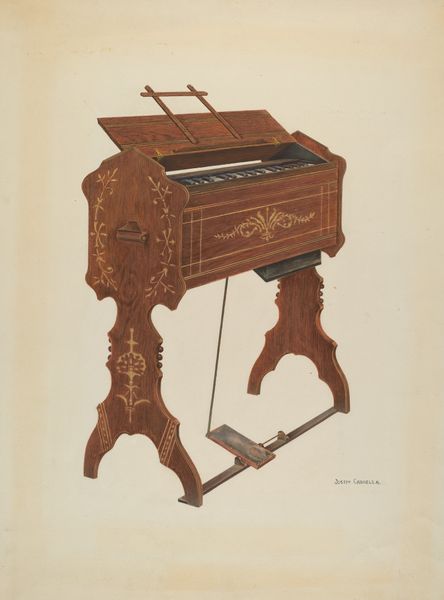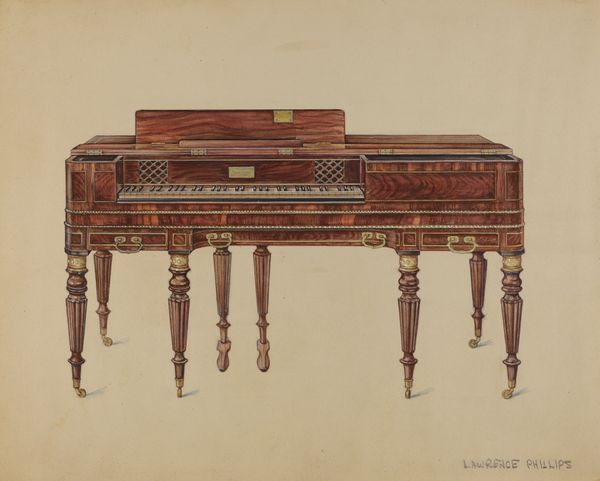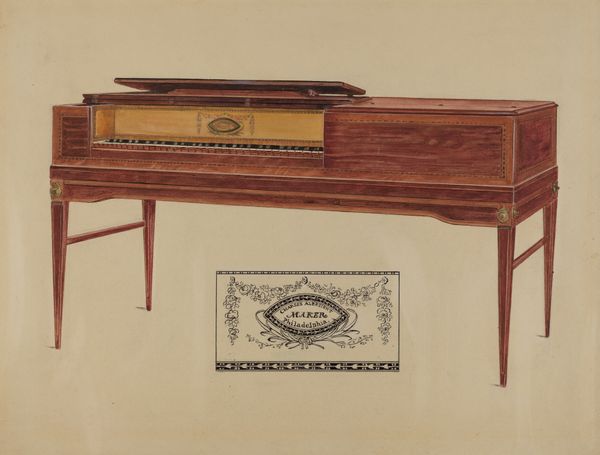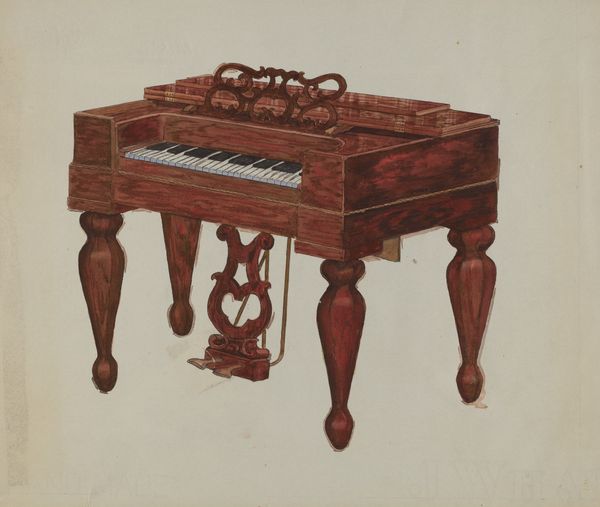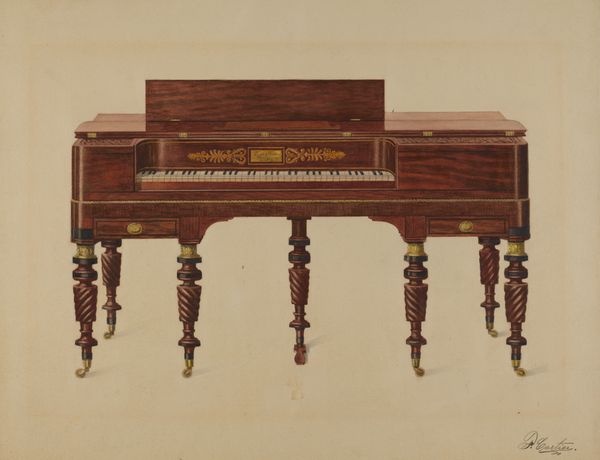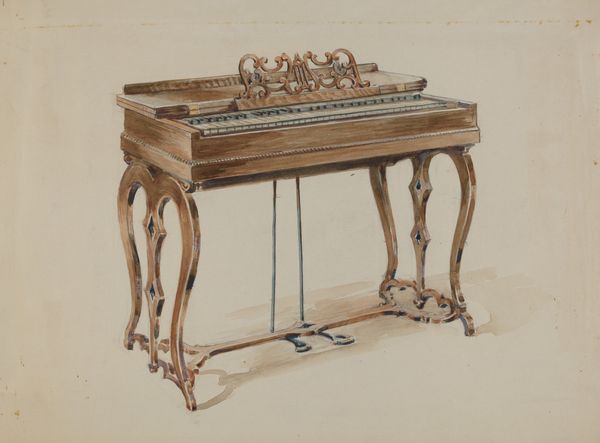
print, engraving
# print
#
decorative-art
#
engraving
Dimensions: height 105 mm, width 142 mm
Copyright: Rijks Museum: Open Domain
Editor: Here we have "Piano van J.A. Kupers," a print by Isaac Weissenbruch from around 1836 to 1912. The engraving details a heavily ornamented piano. The sheer detail captured through this printmaking technique is amazing! How do you see this piece functioning within its time? Curator: Well, let's think about the piano's place in 19th-century society. It wasn’t just a musical instrument, but a symbol of domesticity, affluence, and education, especially for women. This engraving, by depicting such an ornate piano, participates in constructing those social ideals. Editor: So, the image itself is almost aspirational, projecting a lifestyle? Curator: Exactly. We have to consider who this image was created *for.* Was it an advertisement? A record of a particularly fine instrument? The print is a tool; a communication intended to influence its audience, to promote certain social values and norms. What kind of person do you think owned such a piano? Editor: Someone eager to signal their social standing? Perhaps it says something about the maker, J.A. Kupers, too, advertising his artistry? Curator: Precisely. It raises questions about art and its relationship to social power. Where did Kupers source his materials? How were the ornaments crafted, and by whom? Art objects rarely exist in a vacuum; they're embedded in webs of production, consumption, and meaning. It’s important to consider how this image circulated and what effects it produced within the culture of its time. Editor: Thinking about the broader implications adds so much depth! It makes you consider how something as seemingly simple as a piano is actually layered with social and political significance. Curator: Indeed. Every artwork offers a lens through which we can examine the structures of power and representation that shape our world.
Comments
No comments
Be the first to comment and join the conversation on the ultimate creative platform.
